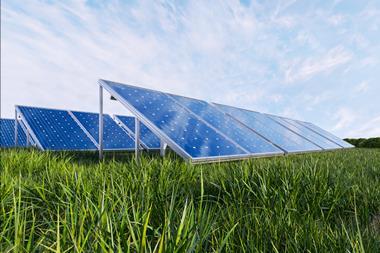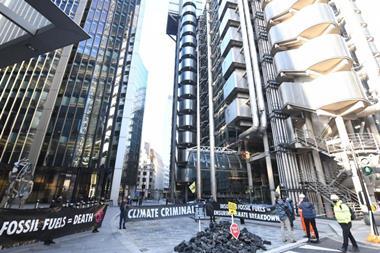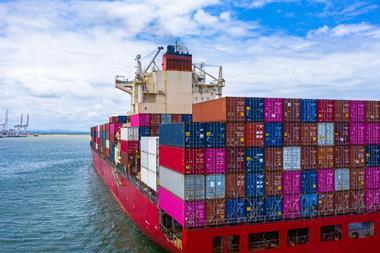Opportunities and risks around greener business
The pressure and desire for the global economy to decarbonise is continuing to grow, as societal and governmental pressure becomes more consistent. To date, over 80% of the global Gross Domestic Product has now set, or is intending to set targets that, in some way, refer to reaching net zero.
As part of the efforts to reach these targets, there are several distinct trends where businesses will play a key role. Globally, energy use in the industrial sector is the largest source (24.2%) of greenhouse gas emissions, followed by energy use in buildings (17.5%) and transportation (16.2%). Typical companies can reduce all three sources of emission in their processes, operations, and transportation of people and products.
Two of the opportunities for businesses to reduce their carbon footprints are using renewable energy sources and storing energy for later use.
If done in a cost-effective manner, these measures can bring real benefits to businesses by improving their ESG (environmental-social-governance) posture. These benefits may be in terms of sustainable operations, better consumer engagement and employee relations, and being a better partner in the locations where they operate. However, many of these actions that are aimed at reducing the environmental impact also can bring with them significant risk exposures. These risks can undermine or more than negate benefits of the positive actions that companies could take.
As an engineering-focused commercial property insurer, FM Global has been studying many of these risks, while also investigating methods to improve business resilience in response.
Building resilience into renewable energy production
Making use of renewable energy sources is one of the major steps that many businesses are taking to reduce their carbon footprints. One such measure is by installing equipment, such as solar panels or wind turbines, and energy storage systems which produce and store their own renewable electricity. This electricity is then either used by the business directly when needed or sold back to power grids to offset operating costs.
Both solar panels and wind turbines create different property risk exposures, and businesses making use of these technologies should keep them in mind.
Solar panels – a potential fire and wind risk
With regards to solar panels, one of the main risks is the potential for fires, most often in roof-mounted photo-voltaic arrays.
These types of solar panels, if not designed, tested, and certified for performance, can result in an electrical failure of the wiring or equipment. If such an electrical failure occurs, the heat often causes the backing of the panels themselves (if made from combustible material such as plastic) and/or a combustible roof below the panels to ignite.
Should a fire occur due to a solar panel failure, firefighting can be very difficult. Frequently access is limited, and panels may need to be deenergized before firefighters can operate effectively, making suppressing the fire and protecting a facility much more difficult.
To minimise the risks of such a fire occurring, it’s really important that panels are designed and installed to meet proven electrical performance and reliability standards to reduce the potential for an arch or short to occur. Furthermore, the panel itself should be tested and certified to ensure its flammability will limit fire severity. After installation, solar panel arrays should be kept free of debris such as leaves, trash or other combustible material, to minimise potential fire spread should a fault occur. This is why building owners should consider undertaking regular housekeeping/cleaning, and visual wiring inspections of solar panels to minimise the risk of a fire occurring.
Solar panels are also vulnerable to windstorms and hail. High winds can damage the panels and the supporting structures while hail in particular is a significant risk. Solar panels in hail prone regions requiring design and fabrication to withstand hail impact. If this need is met, visible damage or less visible microcracking can significantly degrade their ability to produce electricity.
Alternatively, it may be possible to quickly reposition the face of the panels downwards or cover them to reduce the impact of hail, minimising the damage caused.
Wind turbines
As technology and materials have improved, wind turbines have increased in physical size and energy production. No longer are they the small and clustered turbines on rural ridges, but instead they can be up to about 300 metres tall.
As turbines have become taller and taller, they suffer an increased risk of being damaged and also present greater risks to nearby facilities. Notably, large turbines may be particularly vulnerable to ground motion, base mounting corrosion, and extreme winds (when the blades are not parked soon enough to avoid overspeed), which can cause them to topple in a worst-case scenario.
Additionally, the generator nacelle at the hub of the blade contains hydraulic fluid and other ignitable liquids. If even a small leak was to occur these can be ignited by components overheating or potentially lightning strikes. Hail can also cause damage to turbine blades themselves as the impact velocity of the hail meeting the blade can be very significant.
These risks can cause significant damage to both the turbine and the surrounding facility, and therefore need to be appropriately addressed in the design, fabrication, and placement of these units. Similarly when in operation, the risks needs to be considered when conducting inspections and maintenance.
Electrical Energy Storage
For organisations that are generating renewable energy, a question remains – what to do with this energy when they’re not using it? Many organisations are investing in means to store this energy as electricity, using it to power electrical systems and machinery rather than using internal combustion. One of the most common and impactful means to store electrical energy is to use lithium-ion batteries.
The ability of lithium-ion batteries to store large amounts of energy in a cost-effective manner means they are gaining popularity and becoming more widely used across industry. Despite these advantages, the batteries can bring with them notable increases in fire risk. The most severe of these occurrences is referred to as thermal runaway. This is caused by a battery overheating, potentially due to a short circuit, which in turn causes adjacent batteries to overheat and catch fire. Such fires can be very difficult to control due to both the presence of electricity and the combustible gases that are released long after batteries experience thermal damage
To protect against lithium-ion battery fires, businesses should ensure that energy storage systems have battery management hardware and software that is tested and certified to limit thermal runaway. Further measures can be taken by placing systems in small banks with spacing between them. By doing this, sprinkler systems can operate more effectively to suppress fires, while fire services will also have better access to the batteries. Since lithium-ion batteries don’t contain lithium in its primary form, water-based fire suppression doesn’t produce any additional explosion hazards.
For more information about managing lithium-ion battery risks, read this article.
Looking ahead, decarbonisation of energy production and storage will continue to have a massive effect on how businesses operate. These trends are not going away, and in fact calls to move to a low-carbon economy are growing stronger. Businesses have a critical role to play in this transition, but they should ensure that any actions taken are managed appropriately from a risk perspective. This is where innovative, engineering-focused insurers, can play an important role, helping businesses mitigate risks as they move towards net zero.
Dr Lou Gritzo is vice president and manager of research at FM Global




















No comments yet